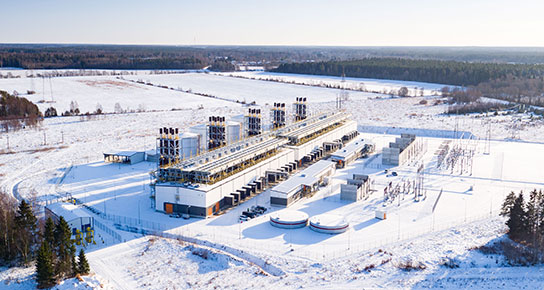
About Energy
About Marine
The global energy landscape is in transition towards more flexible and sustainable energy systems. Climate policies, energy security, and economics are all driving rapid progress towards a more sustainable global energy system. In China, there is a growing trend to replace coal-fired power plants with renewable energy sources (RES) and power plants running on natural gas. As the largest energy producer and consumer in the world, China is well placed to drive the energy transition.
Jiangsu is one of China’s leading provinces in terms of economic development. Currently, Jiangsu’s power system is facing various challenges: the development of coal-fired power is restricted, and there is an insufficient supply of electricity to meet the growing energy demand. In order to meet this demand, Jiangsu will mainly focus on developing the following power sources: gas power, energy storage, pumped hydro storage, and variable RES. As the share of RES will continue to increase, Jiangsu’s power system will face new challenges in maintaining system reliability, resilience, and stability. Without adequate and detailed planning, the overall cost of generation will increase, despite the addition of lower cost RES.

.jpg?sfvrsn=38ae8544_12)
Wärtsilä and the China Energy Power Planning & Engineering Institute (EPPEI) jointly launched a study titled “Enhancing Power System Flexibility: Finnish Experience and Application in Jiangsu”. The study showcases how China can accelerate the energy transition by integrating more renewables and improving power system flexibility. The study considers three scenarios – baseline, moderate RES and high RES – and shows how the optimal path to more renewables can help lower system costs, while maintaining system reliability. To achieve this, flexible capacity, notably gas-based internal combustion engine (ICE) power plants, is needed to integrate RES and provide peaking and frequency regulation services.
The efficient and flexible ICE power plants allow the system to quickly meet the need for short-term rapid response when integrating RES, without risking the power system reliability and stability. An ICE can reach 100% capacity within just 2 minutes, quickly ramp up and shut down, and can be restarted without any operational penalties and with minimal downtime. This capability saves fuel, wear-and-tear, as well as emissions, since it is not necessary to run the engines idle. ICE power plants are different from conventional thermal power plants, such as steam & gas turbines. These ICE power plants provide ultimate flexibility with high efficiency even at low loads, and can operate on natural gas, liquid or biofuels. These plants can operate on baseload, provide peaking power, and also provide grid stability services.
Renewables and flexible ICE power plants will provide economic, environmental, and operational benefits for Jiangsu’s power system
According to the study, increasing the amounts of RES and adding flexible ICE power plants to Jiangsu’s power system will provide both economic, environmental, and operational benefits. RES combined with flexible ICE power plants will enable increased grid stability and reliability, while lowering the overall power system costs. Integrating cheap RES into the power system will also enable less gas usage, and will decrease dependence on imported gas (liquefied natural gas). It will also lower CO2 emissions and reduce water consumption compared to gas turbines.
Looking at the results of the study, the high RES scenario clearly shows big potential for further renewable integration in China. Compared with the baseline and moderate RES scenarios, the high RES scenario would be the most optimal scenario, achieving the highest savings, a lower levelised cost of electricity (LCOE), and much lower emission levels, which is important from a sustainability perspective and for China to reach President Xi’s target of carbon neutrality by 2060.

The efficient and flexible ICE power plants allow the system to quickly meet the need for short-term rapid response when integrating renewables, without risking the power system’s reliability and stability
Enhancing Power System Flexibility: Finnish Experience and Application in Jiangsu
The Development and Reform Commission and the Joint Energy Bureau encourage companies to develop renewable energy. Wärtsilä's flexible power generation technology to help achieve the " dual carbon " goal.
13 October 2021 12:00, Opinion Editorial
How Flexible Power Generation Can Support Jiangsu’s Power System, Lowering Emissions And Reducing Costs—Finland-China (Jiangsu) Smart Energy Seminar
13 November 2020 06:30, Local press release
Can China become a world leader in the transition to renewable energy?
Please fill in the form, we aim to respond within 1-2 business days depending on the enquiry. For an existing installation, provide all necessary details to identify the installation and the equipment. Fields indicated with an asterisk (*) are required.